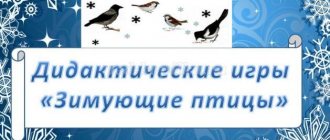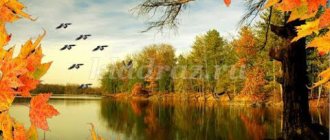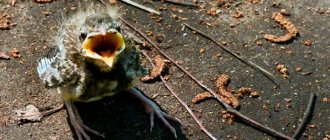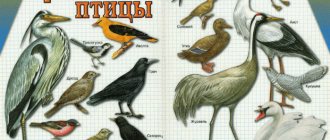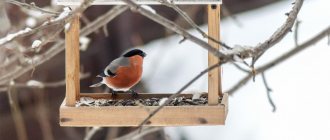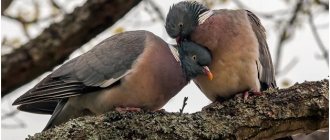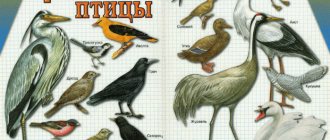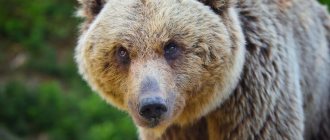What do nightingales do? Description and features of the nightingale
The nightingale is the bird of happiness. This has been considered so in the East since ancient times. The singing of a nightingale was reputed to be an omen of happiness. Therefore, catching birds was a profitable business. Sheikhs, nobles, and emperors bought birds. Russian tsars also kept Soloviev in their palaces.
In the 19th century, in some provinces, catching songbirds was banned due to a decline in numbers. Some birds were supplied to domestic nobles, while others were sold to overseas merchants. They recognized nightingales not only by their singing, but also by:
In the East, the nightingale was considered a bird of happiness
- Body length is from 15 to 28 centimeters.
- Weighs about 25 grams.
- Olive-gray plumage. It is inconspicuous, like a sparrow's. The sides of the bird are gray, the belly is light, the back and wings are darkened. There are reddish tones at the tip of the animal's tail. Therefore, the nightingale in the photo can be confused with other passerines, for example, thrushes, to whose family it is classified. However, some ornithologists classify the hero of the article as a flycatcher. From this point of view, the bird is a relative of the nightingale - the gray flycatcher.
- The miniature beak is yellow.
- Round, black eyes. On the small head of a nightingale they look large.
- Thick and mobile neck.
- The straight cut of the tail is alternately raised and lowered by the bird while sitting. In flight, the tail is set straight.
What a nightingale looks like depends partly on the type of bird. There are 14 options. The singing abilities of different types of nightingales also differ. There are even voiceless birds.
Settled, wintering birds: list, photos with names
To help the birds that remain over the winter find food, feeders are hung. And it is quite possible that they will be of interest to the following visitors:
- Sparrow . Noisy sparrows that fly in flocks may well become the first visitors to the feeder.
flock of sparrows
- Tit. Tits are in many ways not inferior to sparrows; they quickly rush to feed in feeders. But compared to sparrows, tits are endowed with a more gentle disposition. Interestingly, in the summer the tit eats almost as much food as it weighs. You can often see mixed flocks of both sparrows and tits at feeders.
Tit with a piece of bread
Sparrows and tit
- Gaichka . A close relative of the tit. However, the chickadee's breast is not yellow, but light brown. The chickadee also differs from other tits in that it makes a hollow in a tree to make a nest in it.
The chickadee is a special type of tit
- Crow. Ravens are often confused with rooks. It is known that in the western part of Russia crows are very rare. Therefore, if you live in the European part of Russia and see a black bird emitting a piercing croak, then most likely it is a rook.
Black Crow
- Pigeon. The distribution and lifestyle of pigeons was largely influenced by people who simply brought them with them to different parts of the Earth. Now pigeons are found on all continents except Antarctica. Pigeons easily exchange rocks, which are their natural habitat, for man-made structures.
The nodding gait of pigeons is due to the fact that this makes it easier for them to examine the object of interest to them.
- Woodpecker. In the warm season, woodpeckers feed mainly on insects, which they get from under the bark of trees, and in the cold winter, they can also feed on plant foods: seeds and nuts.
Woodpeckers love to eat seeds from pine and spruce cones.
- Magpie. The magpie is considered a bird of high intelligence; it is capable of expressing a lot of emotions, including sadness, and can recognize its reflection in the mirror. It is interesting that not only its fellow birds react to the alarming cry of a magpie, but also other birds, as well as wild animals, in particular bears and wolves.
Magpie - wintering bird
- Owl . Owls come in different varieties, large and small, and there are more than 200 species in total. These birds are endowed with acute vision and excellent hearing, which allows them to lead a nocturnal lifestyle. It is interesting that the tufts on the owl's head are not ears, the real ears of owls are hidden in the feathers, and one of them is directed upward, and the other downwards, in order to better hear what is happening above the head and on the ground.
Owl is a night bird
- Owl. This bird is also considered an owl and is a close relative of other owls.
Owl
- Tawny owl. A rare owl that lives mainly in mountainous areas in northern latitudes. The name of the bird, according to different versions, means “inedible” or “insatiable.”
Tawny Owl
- Jackdaw. Externally, jackdaws are similar to rooks and crows; moreover, there are mixed flocks in which all three species of birds can be seen. However, the jackdaw is smaller in size than the crow. And if you are lucky enough to observe a jackdaw up close, you can easily recognize it by the gray color of some of its feathers.
Jackdaws really like shiny objects
- Nuthatch. This little bird climbs tree trunks very deftly. In summer, nuthatches hide seeds and nuts in the bark, and in winter they feed on these supplies.
Nuthatch on a birch tree
- Crossbill. Like the nuthatch, this bird is excellent at climbing trees and can hang upside down on branches. Crossbill's favorite food is seeds from spruce and pine cones. This bird is remarkable in that it can hatch chicks even in winter, but only if there is enough food.
Crossbill on spruce branches
- Bullfinch. Only males have bright red plumage on the chest; females look much more modest. Bullfinches are more often seen in winter, because due to lack of food, they are drawn to people. In summer, bullfinches prefer wooded areas and behave inconspicuously, so they are not easy to see.
Pair of bullfinches
- Waxwing . A bird with beautiful plumage and a singing voice. In summer it feeds mainly on insects and likes to settle in coniferous forests. In winter, the waxwing moves to more southern regions of the country and is often found in cities. In the cold season, rowan and other fruits become the main food for birds.
Waxwing on a rowan branch in winter
- Jay. A large bird, which, however, can fly to feast on a feeder hung by people. In the summer it is rarely seen in the city, but closer to winter the bird begins to reach out to human habitation.
Jay in winter
- Kinglet. One of the smallest birds, the weight of an adult male is only 5-7 grams. Kinglets are relatives of sparrows.
Kinglet - forest dweller
- Pheasant . A large bird that is a favorite trophy for many hunters. Pheasants can fly, but most often move on foot.
Pheasant
- Hazel grouse . It is also an object of hunting, despite the fact that this bird is quite small. The weight of an adult hazel grouse rarely reaches 500 g. Interestingly, the largest population of these birds lives in Russia.
The hazel grouse is a bird that is related to the black grouse
- Black grouse. Another bird that is related to hunting. Black grouse are found at the edge of the forest and in the forest-steppe.
Grouse
- Sokol . It is considered one of the smartest birds on the planet and one of the best hunters. The falcon is capable of working in tandem with a person, but it is very difficult to tame it.
Falcon in flight
- Hawk . Like the falcon, it is a bird of prey. A hawk's vision is 8 times sharper than a human's. And rushing after prey, the hawk can reach speeds of up to 240 km/h.
Hawk
Summer
Bird life in summer
The main task of each species of birds for the summer is feeding and adapting the chicks to life. If the summer turns out to be rainy and cool, then the life of birds becomes somewhat more difficult. Chicks die from colds and hunger. And the parents themselves are in great danger while it rains.
Drought is also not a favorable state of nature for birds. For birds living in swamps, drought is a disaster. During such periods, wading birds are forced to go out in search of a new habitat. And if the hot days drag on, the vegetation begins to dry out. This situation is dangerous for all types of birds.
The main task of birds for the summer is to teach their chicks to fly, so that in the fall they can fly south with their parents.
As a rule, summer days are accompanied by early dawn and late sunset, so the days of many birds become longer. So, for example, chickadees, they wake up with the first rays of the sun and fall asleep at sunset.
And the songs of the redstart can be heard at any time of the day, because they wake up before sunrise and fall asleep at dusk.
In the summer, birds are especially active and lead their usual lifestyle. Day and night predators hunt in forests and steppes. The familiar inhabitants of crowded places fly along the streets of cities and villages.
Autumn
Which birds fly away in the fall and which ones stay?
Why do birds fly south? Because in winter they do not have enough food, and there is a possibility that their body will not survive severe frosts. Most of the inhabitants of the tundra are migratory birds, and some species in the taiga are migratory birds. The number of migratory species depends on how suitable the habitat is in terms of food - whether there are enough food supplies. Thus, it turns out that half of the forest feathered inhabitants fly south. And fields, swamps and ponds are left to spend the winter without their winged inhabitants.
Migratory birds include finches, wagtails, song thrushes, chiffchaffs and swallows. Lapwings, tree pipits, larks, orioles, robins and redstarts also prefer migrating to warmer lands.
But there are birds that are able to withstand cold days; they are called sedentary. These birds include: woodpeckers, tits, pikas, nuthatches and jays. Cold days are not scary for wood grouse, black grouse and hazel grouse. And the crossbill bird can generally build nests in winter and breed offspring.
It is worth highlighting the nomadic bird species. They do not fly away to warmer climes, but constantly move from place to place. For example, waxwings, titmice, walnuts, redpolls, bullfinches and many others.
Nightingale in Ukrainian. Nest
Nightingale of ancient Uglich
Masonry Sonograms of fragments of songs of nightingales of the original and unique nature make it possible to reliably separate two species behind the voice
Nest along the nodes of deciduous forests, in thickets of bushes in gray yars, light small forests , abandoned gardens, parks with thick undergrowth and undergrowth, near dense leafy young growths, thickened forests and smogs along the roads.
They nest in close pairs, which in friendly habitats can be placed at a distance of 50-100 m, one at a time. The nest will be located on the ground, along the roots of bushes, trees, sometimes under heaps of khmizu, and rarely, not high above the ground (15 cm or more) near cleared bushes. The nest, as a rule, is not located in a hole, like most birds that nest on the ground, but in the middle of the forest floor in such a way that its edges are on the same level with the surface.
The nest is a rough spot. The outer ball is made up of several rows of rotted tree leaves. Along the edges of the nest, needles, dry stems of herbaceous shoots, and often sedge leaves are added to them. The base of the nest is also made up of leaves. The tray is lined with very thin stalks of cereals and their soaked leaves, cinnamon, wool, and sometimes with houses of horse hair. Pіr'ya for hanging is not vikoristuyutsya.
The first clutch has 4-5, or 6 eggs. The scallop is shiny, sometimes even matte. The barley varies from olive brown to dark chocolate color. There are no spots or specks on the scallop, but in the adjacent spots on one of the ends there are more ore stains, apparently a large number of small brown-ore specks.
.
